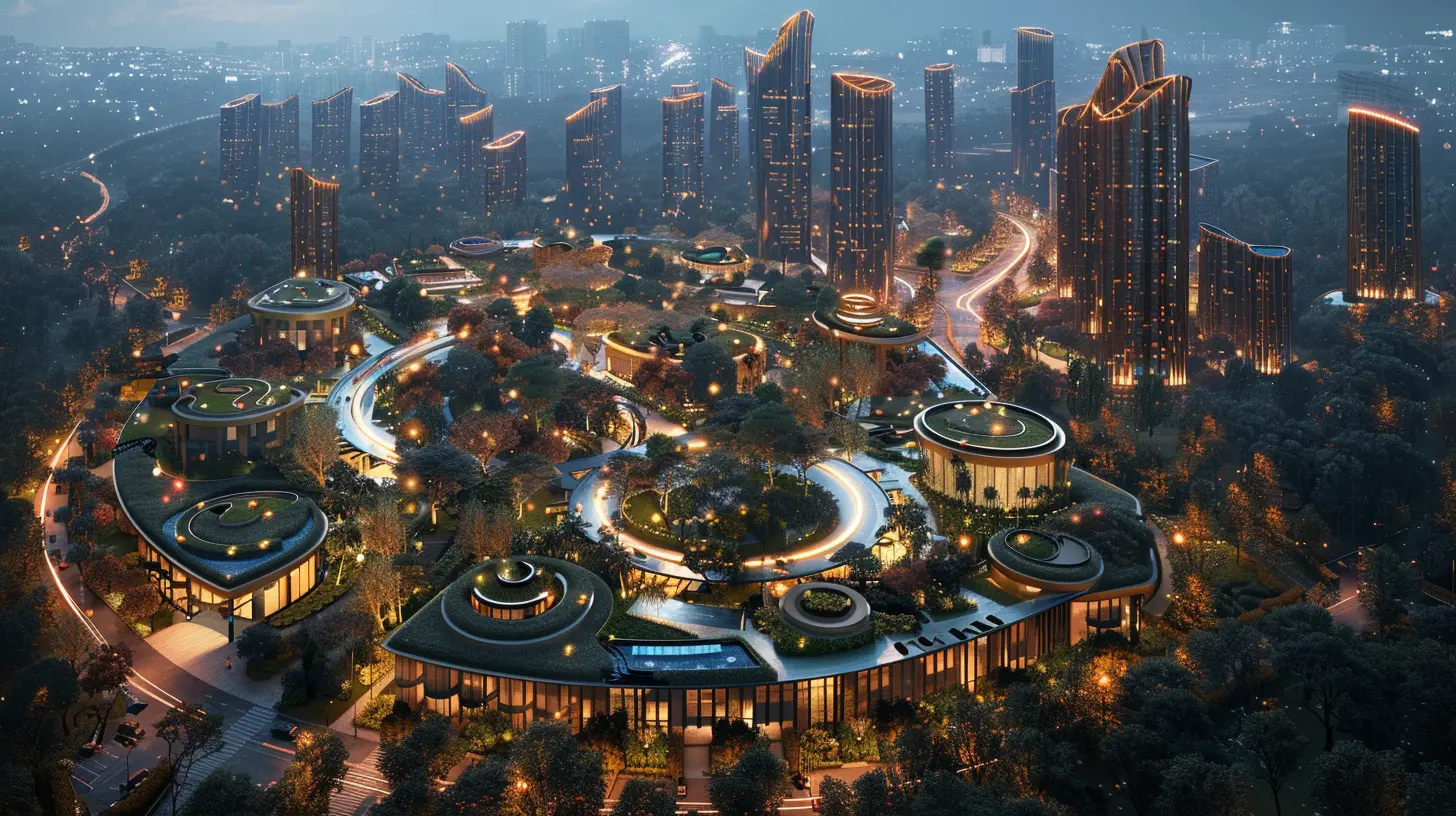Affordable Housing Solutions in Major Urban Centers
27 July 2025
Housing affordability is a growing challenge in major urban centers worldwide. With skyrocketing rental prices, increasing property costs, and stagnant wages, finding a place to live that doesn’t break the bank feels almost impossible. But here’s the thing—there are solutions.
In this article, we’ll dive deep into practical, realistic, and effective affordable housing solutions that can make city living within reach for more people. We’re talking about policies, innovative housing models, and smart strategies that can turn the dream of affordable housing into a reality. 
Why Is Affordable Housing Such a Problem?
Let’s be real—urban centers have always been expensive. But in recent years, the situation has worsened. Why?- Supply and demand mismatch – More people are moving to cities for work and opportunities, but there aren’t enough affordable homes being built. When demand outstrips supply, prices soar.
- Wage stagnation – While housing costs have skyrocketed, wages haven’t kept up. The result? More people spending an unsustainable portion of their income on rent or mortgages.
- Zoning laws and regulations – Strict zoning rules and outdated policies can prevent the development of affordable housing options.
- Investment trends – Investors and real estate developers often prioritize high-end developments because they bring bigger returns, leaving fewer affordable homes on the market.
So, what can be done? Let’s look at real solutions. 
Innovative Affordable Housing Solutions
1. Expanding Affordable Housing Programs
Public housing and government-subsidized housing programs play a crucial role in affordability. Cities need to invest more in these initiatives to provide lower-income families and individuals with reasonable options. Some of the most effective approaches include:- Section 8 Vouchers (U.S.) – Government-subsidized rent assistance helps low-income families afford private-market housing.
- Inclusionary Zoning – Developers are required to allocate a certain percentage of units for affordable housing in new projects.
- Community Land Trusts (CLTs) – Nonprofits purchase land and lease it to homeowners at affordable prices, keeping housing costs low over time.
These programs, when properly funded and effectively managed, can make a significant difference.
2. Tiny Homes and Micro-Apartments
Sometimes, less is more. Tiny homes and micro-apartments are emerging as viable solutions in urban areas where space is at a premium.- Tiny Homes – These small, efficient living spaces provide an affordable alternative to traditional housing, especially for singles or small households.
- Micro-Apartments – Compact, cleverly designed apartments maximize space with multi-functional furniture and smart layouts.
While these options may not suit everyone, they help reduce housing costs and offer a practical solution for urban dwellers on a budget.
3. Co-Living and Shared Housing Models
Think of it like an upgraded version of having roommates, but with a modern twist. Co-living spaces are designed for affordability and community living. These setups often include:- Private bedrooms with shared common areas like kitchens and living rooms.
- Lower rents as costs are split among residents.
- Built-in social networks, reducing feelings of isolation in big cities.
With rising costs, co-living is gaining popularity among young professionals, students, and even retirees looking for affordable and social housing options.
4. Converting Vacant Properties into Housing
Did you know that millions of buildings sit empty while people struggle to find housing? Abandoned commercial spaces, unused office buildings, and underutilized hotels could be converted into affordable homes.Cities like Los Angeles and New York have experimented with turning empty hotels into affordable housing for the homeless. Similarly, repurposing vacant office spaces into residential units could help bridge the affordability gap.
5. Prefabricated and Modular Housing
Prefabricated (or prefab) homes are built in factories and assembled on-site, drastically reducing construction time and costs. These homes:- Are more affordable compared to traditional construction.
- Can be erected quickly, addressing housing shortages faster.
- Offer high-quality, energy-efficient housing solutions.
Several cities worldwide are investing in prefab neighborhoods to counter housing shortages without the high costs of traditional construction.
6. Rent Control and Tenant Protections
Runaway rent hikes push many people out of cities. That’s where rent control comes in.- Rent control laws help limit how much landlords can increase rent each year, allowing residents to stay in their homes without sudden financial strain.
- Stronger tenant rights protect renters from unfair evictions and housing discrimination.
While rent control isn’t a perfect fix (it can sometimes discourage new construction), balancing fair regulations with incentives for developers can help.
7. Public-Private Partnerships
Sometimes, the best results happen when the public and private sectors work together.- Incentives for affordable housing developers – Cities can offer tax breaks, low-interest loans, or reduced regulations to developers who build affordable housing.
- Employer-assisted housing programs – Some companies help employees with housing, offering subsidies or designated housing units.
By working hand in hand, governments and businesses can create more affordable options without solely relying on taxpayer dollars.
8. Accessory Dwelling Units (ADUs)
ADUs (also known as granny flats, backyard cottages, or in-law suites) are small, secondary housing units built on a property with a primary residence. These units:- Provide additional affordable rental options in residential neighborhoods.
- Help homeowners earn extra income by renting out space.
- Utilize existing land, preventing the need for large-scale new developments.
Cities like Portland and Seattle have embraced ADUs as a simple yet effective method to increase affordable housing supply. 
What’s Next? The Future of Affordable Housing
Affordable housing solutions aren’t one-size-fits-all. Cities need to adopt a mix of strategies tailored to their unique challenges. More importantly, policies should be designed to support long-term affordability rather than provide temporary fixes.Technology, innovation, and collaboration will play a huge role in shaping the future of affordable housing. Governments, businesses, and communities must work together to make cities livable for everyone—not just those who can afford luxury apartments.
After all, a city thrives when all its residents have a fair shot at decent housing, financial stability, and a quality life. 
Final Thoughts
Affordable housing is no longer a distant dream—it’s an urgent necessity. As we move forward, embracing creative solutions like co-living, prefab homes, rent control, and smart policies can help reshape urban housing in favor of affordability.The road ahead won’t be easy, but with the right strategies in place, major urban centers can become places where people from all income levels can comfortably call home.
Want to be a part of the change? Advocate for better housing policies, support affordable housing initiatives, and stay informed. Because affordable housing isn’t just about shelter—it’s about building stronger, more inclusive communities.
all images in this post were generated using AI tools
Category:
Urban LivingAuthor:

Lydia Hodge
Discussion
rate this article
2 comments
Arwenia McKeever
Affordable homes: because every city deserves a sprinkle of sunshine!
December 9, 2025 at 4:35 AM
Meagan Heath
This article sheds light on a crucial issue. It's heartening to see innovative solutions for affordable housing in urban centers, ensuring everyone has a safe and comfortable place to call home.
August 8, 2025 at 3:38 AM

Lydia Hodge
Thank you for your thoughtful comment! I'm glad you found the article insightful and appreciate the focus on innovative solutions for affordable housing.


